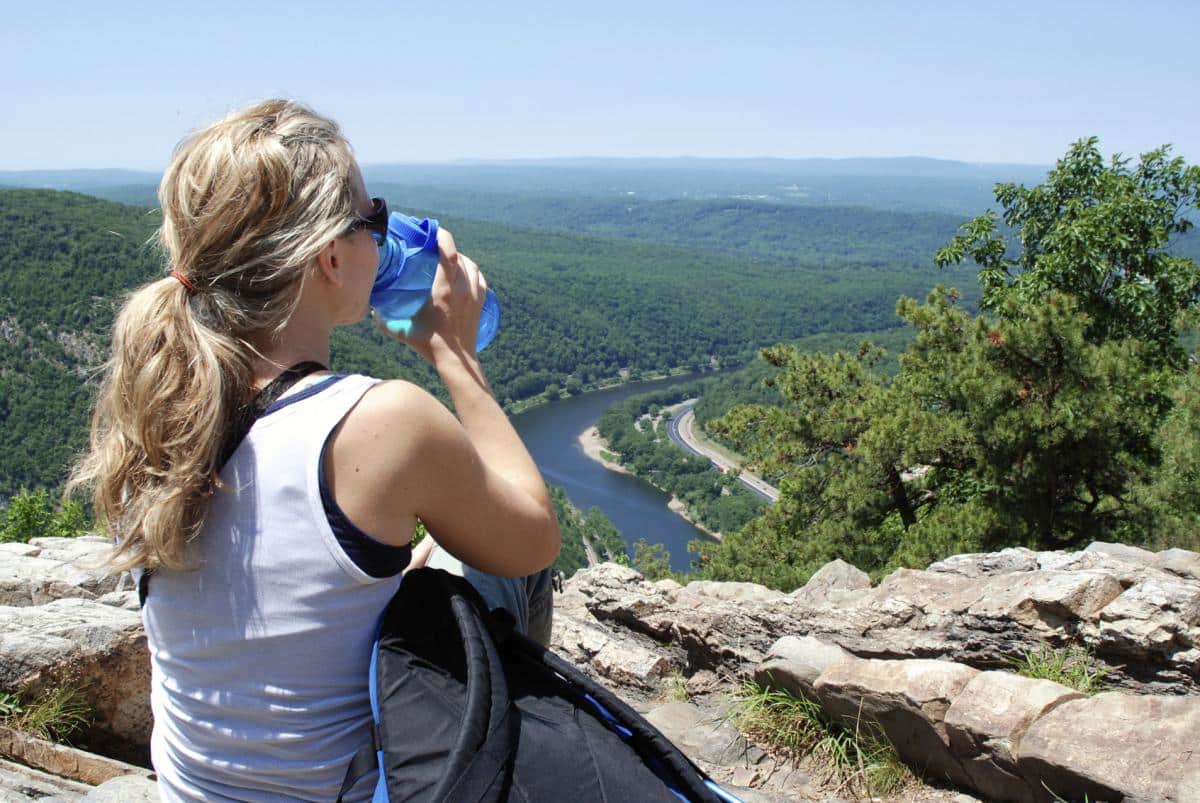On a hike, there are a number of things you need to consider taking: suitable hiking boots, a first-aid kit, and food supplies are all important. Yet the most crucial accompaniment is also the simplest: water. The perennial question remains, however, how much? Here is how you can effectively figure out the answer:
The general rule of thumb
There are of course slightly different consensuses when it comes to how much water you should drink per day, but the most commonly suggested amount is 2 liters for an adult. When hiking, this number increases, and will change again depending on variables such as incline and weather conditions – hot and humid weather will make you sweat more and will require you to take on more fluid. However, in average conditions, here is a general rule of thumb:
Adults – Approximately one liter of water for every one hour of walking
Children – between half and one liter of water for every one hour of walking
The good thing about measuring by time rather than distance is that people walk at different speeds. By having a good estimate of how long your hike will take, it is easier to prepare a sufficient amount of water.
How long will you be hiking for?
A simple question that doesn’t always have a simple answer. The idea here is that, although planning for a worst-case scenario is wise, you also don’t want to be burdening yourself down with 24 hours’ water supply when you’ll only be gone for 12, or if there is easily accessible drinking water on route. Conduct proper research before you set off to consider the average time it takes to complete your hike, what the weather conditions will be like in the case of being slowed down, and find out if water can be accessed at some stage during the hike where you can refill water bottles.
Are there water sources on the route?
This is a key consideration. You don’t need to set off with four, heavy liters of water if there are easily accessed water fill-up points on your route. Clearly, mark on your map where these sources can be located so you can prepare for intervals.
“I am a big fan of portable water filters which enable you to fill up your water bottle from natural sources. Not only does this prevent the need of setting off with burdensome amounts of water, you also feel more independent, which is a great sensation,” suggests Jamie Sayers, a hiking expert at Simplegrad and Essay Services.
How much do you normally drink, and how much will you drink before you depart?
Not everybody is the same, and the conditions are not always equal. Some people drink more than others, while if you have had a big drink of water before you set off, then you are starting from a better place than if you didn’t. Taking a big drink of water if always sensible before you depart, and while on the hike, try to take frequent small sips instead of waiting until you are thirsty – that is your body’s way of telling you that you are already a little dehydrated.
Are you already dehydrated?
As well as being thirsty, pay close attention to your pee. Frequent pee stops will tell you that you are getting enough water, and also closely observe the color of your pee – a yellow/brown color is not good in this regards and tells you to immediately consume more water. Clear urine is a sign that you are hydrated enough.
“I always talk about the importance of peeing – it’s your body’s way of communicating to you how hydrated you are. Peeing regularly is a great sign, so don’t be embarrassed by this – professional hikers never make a song and dance about this as it’s just normal, and healthy,” points out Nancy Watson, a travel writer at Assignment Writing Service and
Australian reviewer.
Do you have a water bladder, and is your water easily accessible?
When it comes to carrying your water, the options are conventional water bottles or water bladders, which are useful because they don’t spill – this is especially important if you have children, or are prone to dropping your equipment. Also, make your water source easily obtainable – don’t hide it down in the middle of your backpack as this will lead to less frequent and more frustrating drink stops.
And that’s it. As long as you have sufficient water and you know where you are going, you’re in great shape to enjoy the hike.
Author bio: Chloe Bennet is an avid traveler and blogger at Coursework Writing Service in UK and NursingService websites. She enjoys writing traveling hacks and reviews submissions. Also, Chloe is a tutor at Urgent Assignment Help portal.
